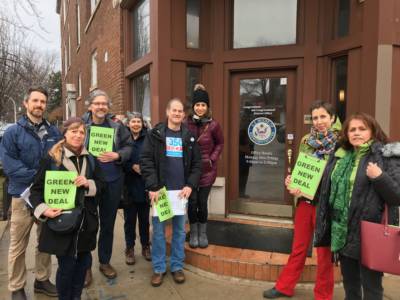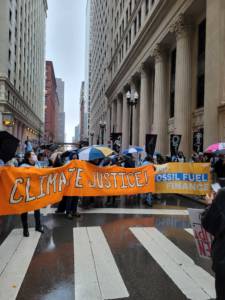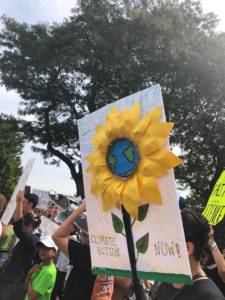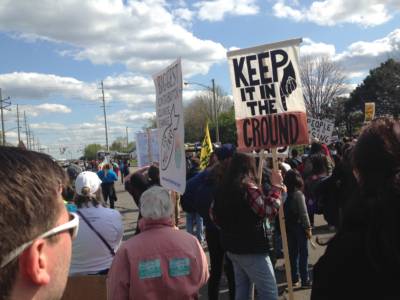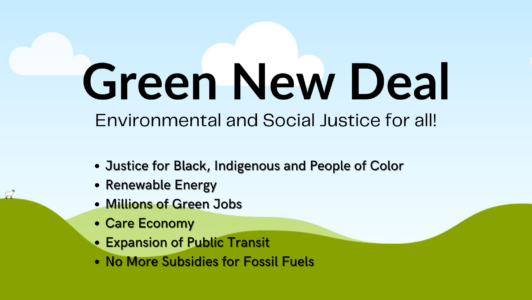From a climate perspective, the Inflation Reduction Act (IRA) deserves the title of, “the Good, the Bad, and the Truly Ugly.” Many aspects of the recently signed law are reasons for celebration as it is the most significant climate legislation the US has ever passed (good). At the same time, the IRA excludes many solutions originally included in the Build Back Better agenda (bad), while also authorizing rather dubious handouts to the fossil fuel industry (truly ugly).
Much of the legislation could be categorized as Good. The overall investment in climate solutions will accelerate the transition toward the deployment of clean energy technology built on solar, wind, and storage technology. The myriad provisions to fight the climate crisis on the supply side signals the willingness of the United States to finally take our climate responsibilities seriously. The subsidies on the demand side will allow consumers to quickly and more affordably transition from machines powered by fossil fuels to fully electrified appliances and vehicles powered by clean energy.
The Bad equates to the items originally intended to be included in Build Back Better or the Green New Deal, but excised from the IRA to gain passage.
The Truly Ugly provisions inserted into the IRA constitute new investments in fossil fuel infrastructure. While we understand the subsidies and incentives for dirty energy were included in the law to secure votes, the reason for their inclusion doesn’t make them any less burdensome and egregious, especially to frontline communities.
Below, we share analysis of the legislation provided by the National Green New Deal Network; all bulleted points are theirs.
The Good:
- Climate and Energy
-
- $180 Billion for clean electricity tax credits. The tax incentives enable more solar and wind installations while upgrading the grid to handle the increased renewables. Tribes, Alaska Native corporations and other nonprofits can take advantage of direct payment of credits.
- Home electrification rebates of $1K-$8K/household for energy efficient appliances, including heat pumps, induction stoves, electric clothes dryers, etc. Sets aside 40% for low-income and tribal communities
- Community solar to serve low-income and affordable housing complexes to reduce energy burden.
- Methane fines: makes fossil fuel companies pay for and fix leaks in fossil fuel infrastructure
- $2.1 billion for federal buildings procurement & buy clean policies for low-carbon materials;
- $5.8 billion to DOE clean technology to decarbonize highly polluting industries like cement, steel, aluminum;
- $5B for Energy infrastructure financing with DOE loan guarantee authority increased from $40B to $250B;
- $5 billions competitive EPA funding for states, tribal govts to develop plans to reduce climate pollution;
- Climate resilience investments for wildfire ($5B) and protection of coastal ($2.6B) communities.
- $4 billion for drought resiliency in Western states, with priority to Colorado river basin states & tribal govts
- $20 billion for agricultural conservation programs -limiting methane and enhancing carbon sinks in soils
- $500 million for Defense Production Act for manufacturing heat pumps and critical minerals
- Lifts Trump-era moratorium and allows Offshore wind leasing on continental shelf
- Transportation
-
- Electrification of school buses and trucks and USPS postal vans
- Tax credits for new EV’s: $7500, Used: $4000
- Funds nationwide network of EV Charging stations
- Funds to reconnect EJ neighborhoods cleaved apart by highways
- $3 billion in community transport to promote walkability and bikeability
- $32 billion in new loans and grants split for auto production and retooling
- Environmental Justice
- 3B for Environmental and Climate Justice Block grants (community-led projects in disadvantaged areas to local governments, Indian tribes, and NGOs)
- $3B Neighborhood Access and Equity Grants – support neighborhood equity, safety, and affordable transportation access with competitive grants.
- $3B Funds zero-emission technology to reducing air pollution at Ports (with 40% set aside to most polluted ‘nonattainment’ areas near ports) – up from $2.6B
- +$5.8 billion for DOE to fund clean technology to reduce industrial pollution from highly polluting industries like steel, auto and cement plants, ensuring job creation in most impacted communities.
- IRA will raise over $11 B by reinstating the Superfund tax, ensuring Superfund cleanups will have a guaranteed stream of funding for years to come. Funding will reduce the pollution disproportionately felt by low-income and disadvantaged communities.
- $1B Clean Heavy-Duty Vehicles program at EPA covers the incremental cost of zero-emission school buses, garbage trucks and transit buses with a $400 million set-aside on vehicles serving communities located in polluted areas.
- Permanent extension of Black Lung Disability fund ensuring coal miners suffering from disease have care
- $60 million for the Diesel Emissions Reduction Act grants will address diesel emissions from goods movement facilities – like airports, railyards, and distribution centers – and from vehicles servicing those facilities.
- $281 million for air pollution monitoring
- $50 million to address air pollution at schools for low-income and DACs
- $87 million Low Emissions Electricity Program to support low-income and disadvantaged communities in reduction of greenhouse gas emissions and pollution
- $25 million for the Enforcement Technology and Public Information program. Upgrades the Environmental Protect Agency’s Integrated Compliance Information System and for states and Indian Tribes to make similar upgrades.
- Indigenous Justice
-
- $420M for four programs aimed at building resilience across Tribal governments: The Tribal Climate Resilience program ($220M), the Tribal Electrification program ($145.5M), an Emergency Drought Relief for Tribes Program ($12.5M), and the Native Hawaiian Climate Resilience program ($23.5M).
- $75M for DOE Tribal Energy loan guarantee program, along with raising its loan authorization from $2 billion to $20 billion to support more clean energy projects
- $17M for outreach and technical assistance to State, Tribal, and local governments, including through partnerships, with respect to reductions in greenhouse gas emissions that result from domestic electricity generation and use;
The Bad:
- Climate and Energy
-
- Civilian Climate Corp not included to address reforestation, climate related disasters, resilient infrastructure to mitigate the effects of climate change, removing job opportunities for frontline and BIPOC communities.
- Refundability of tax credits removed which harms accessibility for low income households.
- Transportation:
-
- E-bike tax rebate with up to $900 in savings not included.
- $10 billion in omitted fundings for high speed rail and rail emissions reductions.
- $10 billion in omitted funding for public transportation to improve affordability, reliability, and access to public transportation.
- Environmental Justice
-
- No funds for lead pipe replacement
- No funds for lead paint removal from over 581,000 homes particularly helping elderly and children.
- Block Grants requires advocates to be vigilant about that money and ensure it’s applied to things good for communities; states can reroute money as legislatures or executive branches desire.
- Unclear if tax credits are not being double counted
- Some of the $60B labeled as EJ has to filter through corporations to reach communities.
- Indigenous Justice
-
- No Free Prior and Informed Consent (FPIC),
- Low funding levels
The Truly Ugly:
-
- Subsidies for coal power plants and fracking;
- Subsidies for trash incineration, biofuels.
- False solutions & fossil fuel investments (oil and gas leasing, biofuels, CCS, hydrogen) and harmful mining
- Mandatory offshore lease sales in Alaska and Gulf
- Mandatory oil and gas lease sales for every solar and wind project on federal lands
- From CBD letter: “Two provisions buried in the Inflation Reduction Act would require massive oil and gas leasing in the Gulf of Mexico and Alaska, reinstate an illegal 2021 Gulf lease sale and mandate that millions more acres of public lands be offered for leasing before any new solar or wind energy projects could be built on public lands or waters. These leasing provisions lock in decades of additional fossil fuel pollution and continue a racist legacy of sacrificing environmental justice communities.”
- Permitting reform and specific projects (like Mountain Valley & Alaska pipelines, LNG export terminals) in a side-deal bill whose text is not released, likely to go into the Continuing resolution.
Overall, the Inflation Reduction Act creates many opportunities and incentives to reduce greenhouse gas pollution by 40% over the next 8 years. Yet the law clearly lacks many of the broader policy provisions necessary for further environmental and social justice in the United States. Problematic subsidies and streamlined permitting processes for fossil fuel infrastructure are odious and will create a further legacy of pollution and resultant illness, especially in frontline, low-income and communities of color.
As an organization, 350 Chicago will continue to advocate for improvements in energy, environmental, and social justice policies, especially in the form of an enhanced Green New Deal. We will continue to advocate for an equitable, clean energy future, free of fossil fuels. The United States needs to finally live up to the ideals of equality, justice and opportunity for all and become an “Everybody In and Nobody Out” society.
If you would like to get more involved in 350 Chicago’s continued work for climate solutions and climate justice, please get in touch. If you would like to read further about the IRA and its provisions, including those to address housing, labor, the care economy, and tax fairness, here is a link to the overall summary provided by the Green New Deal Network.
Written by Larry Coble and Kaitlin Cordes

